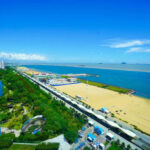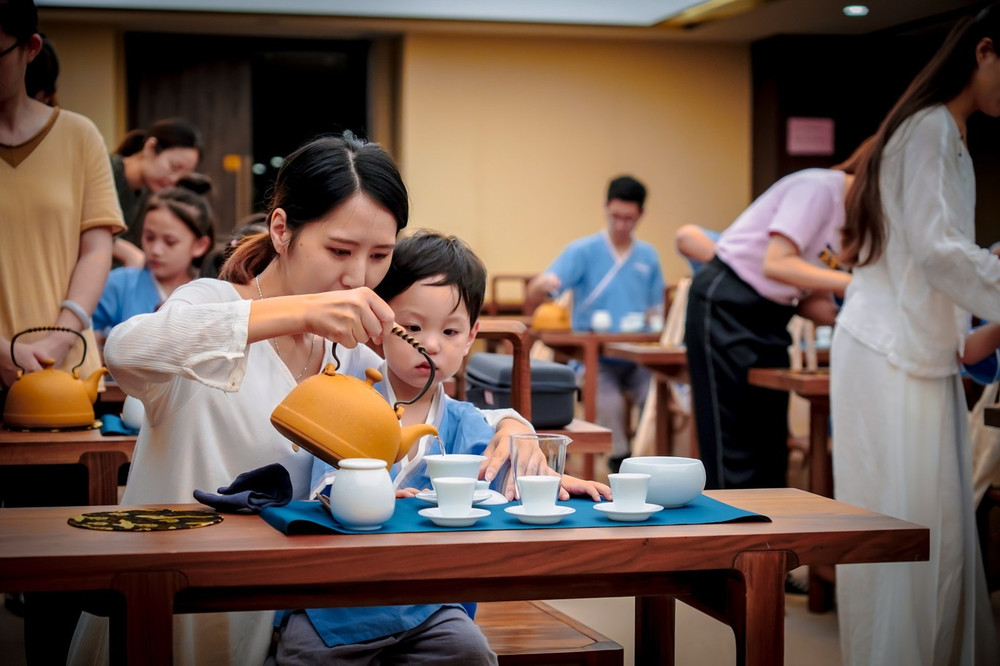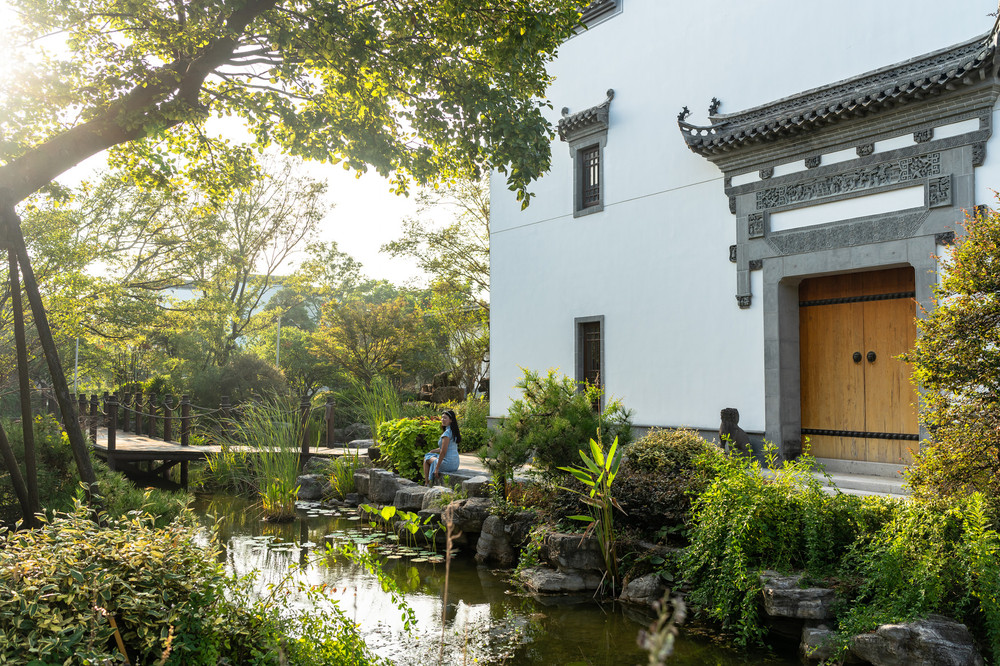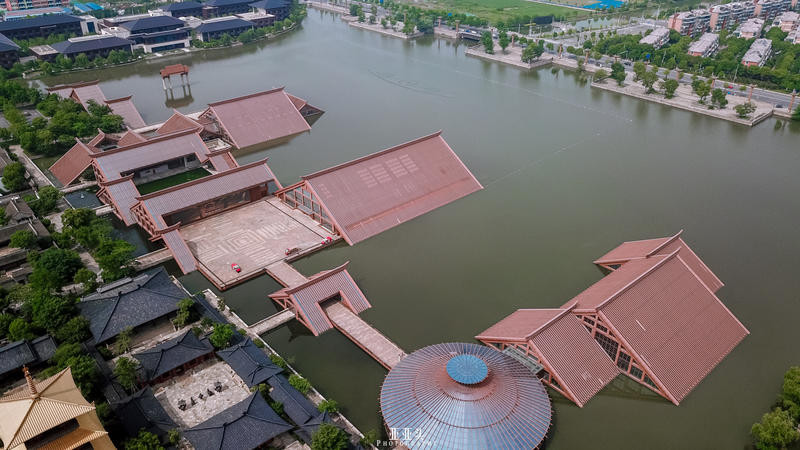Duration: 6 days. Companion: Solo. Activities: Photography, Cultural Exploration. The author visited the following locations: Shanghai. Published on 2020-12-16 09:55. [Goji Island Shanghai-Jiangsu Tour] 5. Sha Jia Bang Resounds with Reeds, Cultural Hospitality to All Directions.

On 2020/10/30, a one-day tour of three scenic spots, hence three separate narratives. Departing from Shanghai, after nearly two hours by car, I arrived at the Sha Jia Bang scenic area. Upon hearing or seeing the name of the scenic area, you will undoubtedly think of the Peking Opera ‘Sha Jia Bang’, where the characters Ah Qing’s wife, Diao De Yi, and Hu Chuan Kui have left a memory for people before the post-70s generation.
The Sha Jia Bang scenic area combines natural reed marshes and is designed according to the story of the Peking Opera ‘Sha Jia Bang’ and local customs. It is primarily themed around the vast reeds, broad waters, and lush greenery, constructing a natural green ecological scenic area in the Jiangnan water town. It features revolutionary history, the legendary story of Peking Opera ‘Sha Jia Bang’, and the cultural historical accumulation of Sha Jia Bang, skillfully setting up various scenic spots. It is a national 5A-level scenic area, mainly consisting of the Revolutionary History Memorial Hall, National Defense Education Area, Red Stone Village, Reed Marsh People’s Home, Reed Marsh Wetland, and Reed Maze. It is worth a visit.
To help young people understand, let’s first explain the background. The modern Peking Opera ‘Sha Jia Bang’ artistically recreates the struggle of the New Fourth Army and the people of the Jiangnan water town bravely fighting against the Japanese invaders. In May 1939, Ye Fei led more than 500 officers and soldiers of the Sixth Regiment of the New Fourth Army with the unit number ‘Jiangnan Anti-Japanese Guerrilla Army’ (abbreviated as ‘Jiang Kang’) to the Yangcheng Lake area of Changshu. After a period of struggle, the anti-Japanese armed forces continued to grow, and the anti-Japanese guerrilla base was consolidated. In September 1939, Ye Fei led the main force of ‘Jiang Kang’ to withdraw to Zhenjiang Yangzhong for reorganization, and 36 officers and soldiers with serious injuries could not retreat. Under the protection and care of the underground party and the local people, they not only recovered from their injuries but also strengthened the anti-Japanese armed forces. In 1960, the Shanghai People’s Hu Opera Troupe created and performed ‘Reed Marsh Fire Seed’ based on this true story. In the spring of 1963, the creation team led by the famous writer Wang Zengqi adapted the Hu Opera ‘Reed Marsh Fire Seed’ into Peking Opera, and under the instructions of Chairman Mao, it was renamed ‘Sha Jia Bang’. Since then, the vivid characters such as Ah Qing’s wife and Guo Jian Guang have become famous throughout the country and deeply rooted in the hearts of the people.
‘Sha Jia Bang’ near Changshu was just a small water town 800 years ago, historically called Reed Marsh Township, and there is still a Reed Marsh Village today. With the approval of the provincial government, in March 1992, it was renamed Sha Jia Bang Town from Reed Marsh Township.
First, the guide took us to a large stone monument, and on the facing wall was the inscription by Ye Fei, the late deputy chairman of the Standing Committee of the National People’s Congress and the former commander of the Sixth Regiment of the New Fourth Army. Taking a sightseeing tour bus to the old street, the first thing I heard was the performance of the ‘wisdom fight’ in Sha Jia Bang on the stage, with the actors singing clearly and rhythmically, and the audience listening as if intoxicated, continuously taking photos and recording videos. Walking up the Dongjin Bridge, this stone bridge is named in memory of the New Fourth Army’s eastward advance. The Dongjin Bridge is 39 meters long to commemorate the eastward advance of the Sixth Regiment of the New Fourth Army in 1939; the bridge deck is 7.7 meters wide, aiming to remember the ‘July 7th’ Incident. Overlooking Red Stone Village, with the gentle breeze in the evening and the swaying reeds, it seems like a Jiangnan girl telling endless thoughts, charming and touching. Walking freely in the Hengjing Film and Television Base (also known as the old street), the cool breeze from the river surface is very refreshing and comfortable.
Days: 6 Days, With Whom: Alone, Activities: Photography, Culture. The author visited these places: Shanghai. Published on 2020### The Sha Jia Bang Scenic Area
The Sha Jia Bang Scenic Area is a blend of natural beauty and cultural heritage. It is designed around the story of the Peking Opera ‘Sha Jia Bang’ and local customs, centered on vast reeds, wide waters, and lush greenery. This creates a green ecological scenic area reminiscent of a Jiangnan water town. The area is rich in revolutionary history, the legendary story of ‘Sha Jia Bang’, and the cultural historical accumulation of Sha Jia Bang. Each scenic spot is cleverly arranged, making it a national 5A-level scenic area.
**Key Components:**
– Revolutionary History Memorial Hall
– National Defense Education Area
– Red Stone Village
– Reed Marsh Home
– Reed Marsh Wetland
– Reed Maze
### Historical Background
The modern Peking Opera ‘Sha Jia Bang’ artistically recreates the struggle of the New Fourth Army and the people of the Jiangnan water town against the Japanese invaders. In May 1939, Ye Fei led more than 500 soldiers of the Sixth Regiment of the New Fourth Army to the Yangcheng Lake area in Changshu. After a period of struggle, the anti-Japanese armed forces continued to grow, and the anti-Japanese guerrilla base was consolidated.
In September 1939, Ye Fei led the main force of ‘Jiang Kang’ to withdraw north to Zhenjiang Yangzhong for training, and 36 officers with serious injuries could not retreat. Under the protection and care of the underground party and the local people, they not only recovered from their injuries but also grew and strengthened the anti-Japanese armed forces.
In 1960, the Shanghai People’s Hu Opera Troupe created and performed ‘Reed Marsh Fire Seed’ based on this true story. In the spring of 1963, a creative team led by the famous writer Wang Zengqi adapted the Hu Opera ‘Reed Marsh Fire Seed’ into a Peking Opera and renamed it ‘Sha Jia Bang’ under the instruction of Chairman Mao. Since then, the vivid characters such as Ah Qing’s wife and Guo Jian Guang have become famous throughout the country and deeply rooted in people’s hearts.
### Sha Jia Bang Town
‘Sha Jia Bang’ near Changshu was just a small water town 800 years ago, historically known as Reed Marsh Township, and there is still a Reed Marsh Village today. With the approval of the provincial government, in March 1992, Reed Marsh Township was renamed Sha Jia Bang Town.
### Visitor Experience
Upon arriving at the old street via a sightseeing tour vehicle, visitors are greeted by the melodious performance from the opera stage, depicting the strategic confrontation in Shajia Bang. Ascending the Dongjin Bridge, named in memory of the New Fourth Army’s eastern advancement, the bridge spans 39 meters to commemorate the eastward march of the Sixth Regiment in 1939; its width of 7.7 meters serves as a reminder of the ‘July 7th Incident’.
Gazing into the distance at Red Stone Village, the gentle evening breeze and the swaying reeds whisper like a young southern girl expressing her endless thoughts, enchanting and touching. Strolling freely along the Hengjing Film and Television Base (also known as the old street), the cool breeze from the river is incredibly refreshing and comfortable.
The Hengjing Old Street Film and Television Base has preserved the old rural architecture and encapsulated the essence of southern towns, recreating the southern countryside’s appearance and cultural characteristics from the 1930s and 1940s. The thirty-episode TV series ‘Shajia Bang’ was completed here, along with other dramas such as ‘Three Words, Two Phrases’, ‘Golden Age’, ‘Chinese Wine King’, and ‘Jasmine’.
The Hengjing Old Street is lined with shops, crisscrossed by small bridges and flowing water. Occasionally, a newlywed couple strolls by with a smile, forever united in the Liu Shun Hall. The Spring Teahouse recreates the original small teahouses scattered throughout the Shajia Bang village, ‘Building the seven-star stove, copper pot boiling from three rivers; laying out the table of immortals, welcoming guests from all directions’. Next to the Spring Teahouse, Auntie Ah Qing’s ‘strategic confrontation’ with Diao Deyi, from their youthful prime to their weathered faces.
The street is filled with a variety of specialty foods, all delicious and reasonably priced, with the entire street offering Yangcheng Lake hairy crabs for you to savor. There’s also Wu Dalang selling baked cakes, who积极配合地 poses for photos.
What sets this place apart from other scenic spots is the daily performances of the model opera ‘Shajia Bang’ and traditional customs shows such as carrying flower baskets and wedding customs, marking a distinct difference.In the Xi Chun Society, Auntie Ah Qing and Diao Deyi, who just performed ‘Strategic Confrontation’ on stage, face you. They teach you line by line and repeatedly how to sing ‘Strategic Confrontation’. They even invite you on stage to sing with them, though none of the group members dare to perform.
Everywhere you look, there are reed marshes. The charm of the southern water town is occasionally revealed. Deep in the reeds, the reed flowers float. They are tender like Shajia Bang and also carry the desolation of winter. Unfortunately, the lotus flowers on the water surface have disappeared. There are only withered lotus leaves, presenting a beauty of decay.
Shajia Bang Scenic Area not only has beautiful natural reed marshes but also the water town’s pastoral surface with rowing boats. All of these are very distinctive. Speaking of reed marshes and boatmen, one cannot help but mention Jin Fagen.
He was the first person to contract the manual boat service at Shajiahang Reed Marsh Scenic Area. Six years ago, when the scenic area invited him to contract the manual boats, Old Jin was not enthusiastic. However, after just a week of operating the boats, Old Jin found the business to be particularly good. Sometimes he earns over 200 yuan a day. ‘Singing folk songs while rowing, I can make twenty thousand yuan in a year, which is quite delightful,’ said Jin Fagen, who is now 60, with a cheerful smile.
Today, the number of manual boats in the scenic area has increased from two to seventy. Each boatman’s annual income reaches 14,000 yuan. This is another solid evidence of how tourism has driven the local people to prosperity.
Waiting at Chunlai Wharf for the boat, there are two types of sightseeing boats available. In addition to the aforementioned rowing boats, the other type is the mechanical one. We took the mechanical one. We couldn’t hear the boatwomen humming local fishing tunes. Only the sound of the engine could be heard.
As the sightseeing boat swayed through the waterways, we lost our sense of direction. This made it understandable why the wounded soldiers of the New Fourth Army hid here and why the Japanese devils couldn’t find the New Fourth Army in the reed marshes back then.
This was the scene captured from the rowing boat that once echoed with the song of Shajiahang. Today, the people of Shajiahang have taken this song off the stage and made the whole town wealthy. They will continue to sing it. It’s hard to imagine what grand drama Shajiahang will sing next! (1914 2020/11/20)









